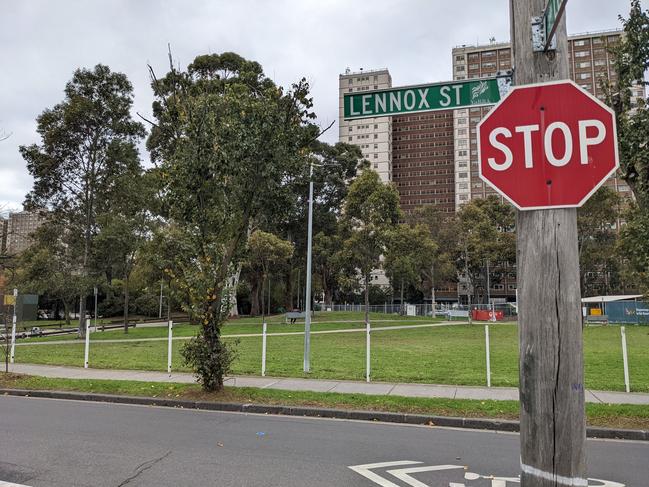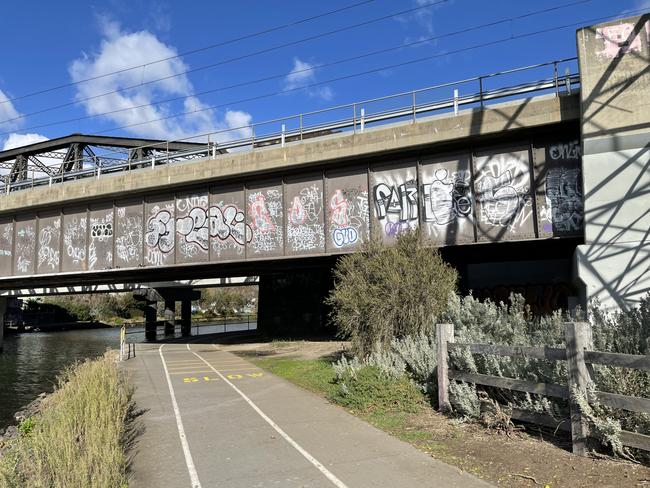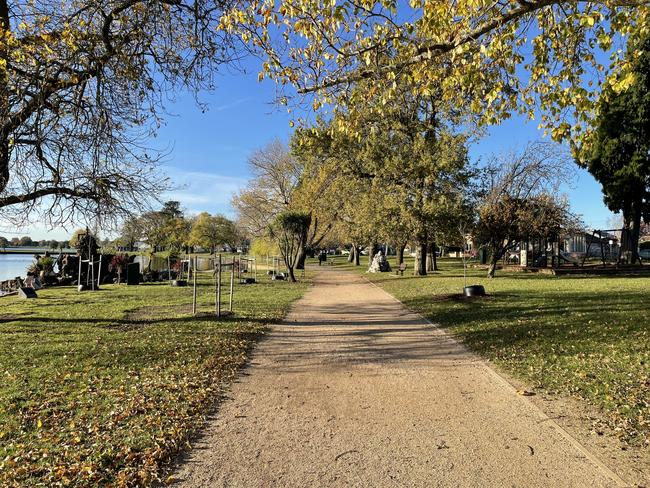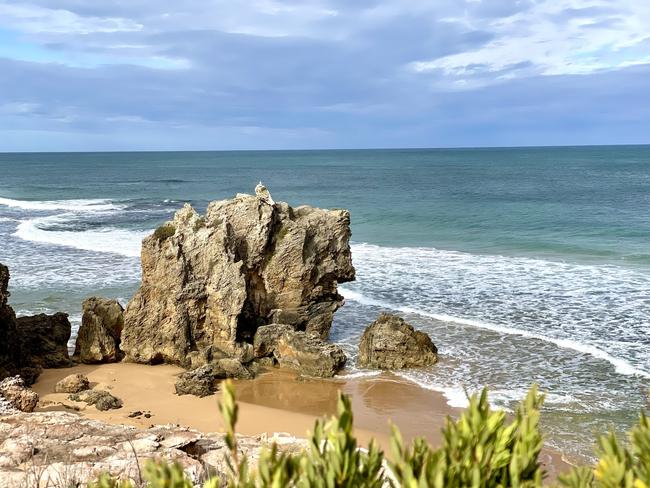Street Safe Victoria: Where every unsafe place in Victoria is
An interactive map shows every unsafe place across the state with some victims detailing horrific and violent attacks. See what needs to change here.
Leader
Don't miss out on the headlines from Leader . Followed categories will be added to My News.
Jill Meagher. Aiia Maasarwe. Masa Vukotic. Eurydice Dixon. Courtney Herron – five young women opportunistically attacked and killed on the streets of Melbourne with each case shocking the world.
These stories illustrate every woman’s greatest fear of walking home at night and being attacked by a stranger – or in Herron’s case, somebody she had met earlier that day – and influence our perceptions of safety.
In this four-part series, Leader highlights the thousands of unsafe places in Victoria and the environmental factors and behaviours that make them so.
It explores the added complexities for how women and gender-diverse people perceive safety when they have disabilities, are from different cultures or identify as part of the LGBTIQA+ community, as well as how the coronavirus pandemic has played into these perceptions of safety.
Drawing on personal stories and experiences and recent studies into perceptions of safety, it then examines how the state and federal government is addressing the issues, in addition to that of Victoria Police.
One such study is a social research project culminating in the YourGround Victoria Report by Monash University’s XYX Lab, in collaboration with digital consultancy CrowdSpot, in 2021.
The aim of the study was to improve access and inclusivity in public spaces, while driving policy in line with the Gender Equality Act 2020.
It gathered almost 6000 anonymous submissions from the community about perceptions of safety while exercising and recreating in Victoria’s public spaces, with respondents identifying locations where they felt most safe or unsafe.
An interactive map was created with this data, highlighting where women and gender-diverse respondents marked places as either safe (564) or unsafe (2618) points across the state.
While data suggests women are more at risk in their own homes than on the streets, statistics from the Crime Statistics Agency show females were more commonly victims of sexual offending than men.
Of the more than 9200 sexual offences recorded by Victoria Police in 2021, at least 1600 were attacked by strangers.
Data reveals that one in every two women have experienced sexual harassment in their lifetime, while one in five women over the age of 15 have experienced sexual violence, and one in three have experienced physical violence.

Women and gender-diverse people from varying backgrounds — including Aboriginal and Torres Strait Islander women, women with disability, older women, women from culturally and linguistically diverse backgrounds and members of the LGBTQIA+ community — experience higher rates of all types of violence, though, according to the federal government’s Women’s Budget Statement last year, these are not well-measured and are often not recorded.
A recent study by Plan International Australia revealed girls and young womens’ perceptions of safety and harassment in public spaces had plummeted since the onset of the pandemic and associated rolling lockdowns.
It found Australian women aged between 18 and 24 felt less safe being alone on the streets, at train stations and parks at night since before the pandemic.
The study – conducted through YouGov – sampled the views of almost 500 young women.
Which areas were unsafe and safe across Victoria?
The map shows the vast majority of streets were marked as unsafe – 92 per cent – along with 68 per cent of park pins and 93 per cent of public transport and parking lot locations.
Trails, meanwhile, collected 550 pins. Respondents marked 84 per cent of trails as unsafe, but also noted some strong caveats around their use of trails; most notably avoiding them when alone or in the dark.
The Merri Creek Trail, Maribyrnong River Trail and Capital City Trail, attracted an array of pins across numerous localities and the most pin, comment and support activity for unsafe pins.
While more than three quarters of pins were placed in areas that partnered with the researchers for the project, the most “unsafe” places were marked in the inner Melbourne area.
Adequate lighting and ‘friendly people’ in an area made respondents feel safer, with the safest places deemed to be green spaces, such as public parks.
The report conceded there was not a large sample of safe places, and was very widespread across the state, but the data generally indicated respondents found places to be safe if they were well-maintained, were open and spacious so there was good visibility – including of what and who is ahead.
More than 20 per cent of respondents qualified a place as ‘safe’, but with a caveat. More than 60 per cent said the place was safe during daylight but they would not go there after dark, while a third determined a place to be always safe. These places were typically described as having foot traffic at all times, in addition to good lighting.
While the report says there were too few safe pins placed by minority groups to draw any conclusions, data from all these groups showed clear exits and entrances were most important, particularly to LGBTIQA+ and migrant and refugees. Good maintenance was also of high importance.
Leader has analysed 15 places across Victoria and where respondents deemed to be safe or unsafe.
MELBOURNE CBD
A wide array of places across Melbourne’s central business district were marked as unsafe, with a particular concentration around Federation Square, Elizabeth and Flinders streets.
Respondents detailed witnessing anti-social and unpredictable behaviour, including from people who were visibly drug affected, being harassed, followed and assaulted.
Numerous respondents noted a lack of police in the station itself and in the blocks surrounding it.

This was consistent with five per cent of respondents who contributed to the project, who said the presence of police or authority figures, such as rangers and council workers, made them feel safer.
The notion of parks and gardens being safer is evident in the safe pins placed across the CBD, including the botanic gardens and the Tan track.
One person, a female in her late 30s, said the scheduled lighting on the Tan allowed for morning and late evening runs while the wide path free from trees and other people often being around made it feel safe.
NORTHERN SUBURBS
North of the CBD, unsafe pins were placed across Fitzroy and Collingwood, with a concentration of pins detailing bad experiences around Nicholson and Johnston streets and east along Johnston to Hoddle Street, where one woman said she was chased by a man with a syringe and “had to run for [her] life”.
Several pins were also placed along Smith Street, with one woman writing there were many “drunk/tweaked/crazy/drug dealing people” and that she has been flashed, racially abused and spat on, while others said the rubbish, broken glass, vomit and cracks in the pavement also contributed to the street feeling unsafe.

The Merri Creek Trail attracted 40 pins, comments and supports from the southern end at Clifton Hill up north to Campbellfield.
Most of the pins were located in the approximately eight-kilometre stretch of trail from Fitzroy North to Coburg, though the report notes the trail does blend into adjacent parks, reserves and sporting grounds which also attracted more pins.
Emily Freemantle used to live near the stretch of trail at Fitzroy.
She told Leader she rarely used the trail when she lived there.
Recalling several incidents, including sexual assaults, along the trail she said it made her feel as though it was an unsafe area to be, particularly after dark–though she feels that way about all trails.
“I definitely had the perception it was more unsafe than other tracks around me because it was more secluded and because of what I’d heard in the media,” she said.
A respondent to YourGround said they loved the Merri Creek trail but only walked along it with a friend.
“There have been too many women harassed or assaulted along the trail, so I don’t feel safe on my own,” their comment reads.
There was also high concern on winding trails about the ability, or inability, to see what and who is around.
While the report notes walking with a dog generally seemed to improve respondents’ sense of security, one jogger aged in her early 40s said the “combination of isolation, intermittent interactions with other walkers and the bushland around made [her] feel unsafe, especially after a number of reports of deaths and rapes in the area” so she no longer ran there with her dog.
Carlton Gardens, meanwhile, is deemed to be safer.
One respondent said: “...you have good sight lines and given the amount of traffic around the boundaries of the park, there are almost always people around.”
OUTER NORTHERN SUBURBS
A smattering of unsafe pins were placed in the outer northern suburbs, including around Craigieburn, South Morang, Mernda and Greensborough.
Many talk about the areas being poorly lit, with one female aged in her early 30s noting that walking home from the Mernda Train Station at night felt “very unsafe” with such poor visibility.

By comparison, Quarry Hills bushland Park at South Morang was deemed to be a safe place to exercise during the day.
EASTERN SUBURBS
A large number of unsafe pins were placed along Richmond’s Lennox Street, with respondents describing the area as “confronting and scary” with constant visible drug use, used needles scattered on the ground, verbal abuse, harassment and fights.
One woman, aged in her early 50s, said:
“Lennox Street has become a dangerous place to walk down or drive through due to people under the influence of drugs. Drug users walk down the street and step out onto the road high on drugs.

“Drug driving is rife with people who have visited the injecting room then jump into their car and drive off or buy drugs from dealers, inject in their car and drive off.”
Despite all of the unsafe pins across Richmond, there were also a number of safe pins including at Citizens’ Park, which includes an off-leash dog park and playground.
SOUTH EASTERN SUBURBS
Many unsafe pins were placed along the waterfront from St Kilda down to Frankston, with most comments about a lack of visibility on trails and intimidating behaviour from people, including drug affected people, in the areas.
One woman in her late 30s said the Seaford Foreshore Walk was known for people who loiter, fights, assaults and muggings.
“Path during the day along foreshore is nice just has a whole new life after dark.”

A concentration of unsafe pins are placed around the Dandenong area, including a number describing drug users and drug deals around the creek.
Though Victoria Gardens in Prahran is seen as safe “as the passive surveillance is always really high”.
WESTERN SUBURBS
Unsafe pins are most prominent around the Footscray, Maribyrnong and Sunshine areas.
Unsafe pins in Footscray were largely placed around Nicholson and Paisley streets.
One female, in her early 20s who identified as LGBTQIA+, said she had been approached by multiple people around Footscray Plaza and even though she had “made it clear their advances were unwelcome” she experienced people trying to follow her into her apartment building.
The comment was supported by ten other people.

Further north, many pins deemed the Maribyrnong River Trail to be unsafe.
One woman, aged in her mid-20s, said she was sexually assaulted while jogging along the trail one morning.
Though safe pins were placed along the coastline at Williamstown and in parks including Yarraville’s Stony Creek and Footscray Park.
BACCHUS MARSH
A range of pins were placed right across Bacchus Marsh. Two unsafe pins were placed on Gisborne Road, with a woman in her early 40s writing she had encountered “groups of men in cars on several occasions shouting, trailing [her] and throwing drink cans”.
A teenager identifying herself as First Nations added she had been cat called and followed both during the day and at night and felt unsafe walking there after 6pm.
Peppertree Park, meanwhile, was deemed safe.
BALLARAT
A smattering of safe and unsafe pins were placed right across the regional city, with the latter largely around the CBD and south through Sebastopol.
The most unsafe pins were placed around Bridge Mall and the Little Bridge Street area, with respondents detailing assaults and drunken and disorderly behaviour factoring into them feeling unsafe in the area.

By comparison, Lake Wendouree and Victoria Park were deemed safe.
BASS COAST
There are more safe than unsafe pins in this area, from Portsea to Flinders and Phillip Island.
One respondent posted of the Ventor Road area:
“Lovely boardwalk with nice views. Often busy with bus groups but nice walks… rangers frequently patrol or are working nearby.”
Though two unsafe pins were placed at Bass Coast Plaza.
BENDIGO
Unsafe pins were placed right across Bendigo, though some common placements were around Hargreaves Mall.
One young female, aged in her early 20s, said people who frequented the area made her feel uncomfortable while another female, aged in her early 30s, said “groups of undesirable people hang around there at all hours, smoking, drinking, swearing and being generally obnoxious. Fights break out there daily.”

Three safe pins were places across Bendigo – one at Kennington Football Oval, another at Lake Weeroona and a third slightly further out at Back Creek, Ascot.
GEELONG
Responses were widespread across the Geelong area, with most pins placed in the CBD and along the waterfront.
One female, aged in her early 30s, said of the Limeburners Point area: “The area feels unsafe. Groups of men gathered and drinking, smoking and calling out. I used to jog through here often but now avoid it.
“Cars are often speeding and driving aggressively in and out of the car park and around Eastern Park.”
Another area respondents marked as unsafe was the Moorabool street area, particularly around the mall, due to harassment and “aggressive and unruly behaviour” at the bus stops.
One person said they had seen men expose themselves there.
Though safe spots pinned around parks and the Barwon River.
Further out, safe places dominated the pins at Ocean Grove, Barwon Heads and Drysdale.
MARYBOROUGH
A selection of pins were posted across Maryborough, with all marked as varying degrees of unsafe.
One pin placed by a teenage female, at Napier Street, says she would never go to the area at night.
“Avoid at all costs,” it reads.
Another pin on Park Road, by a woman in her mid-40s, described the park as unsafe for women, especially at night, due to poor lighting, people sleeping in the grandstand, drug use and drunks.
No safe places were marked in Maryborough, though there was one pin at C.L Bucknall Park in nearby Carisbrook.
SHEPPARTON
A woman aged in her early 50s said the Shepparton shopping area was unsafe due to the behaviour of others and no visible police presence.
Another pinned Maude Street as unsafe due to “lots of people waiting for the bus, fighting, swearing and yelling”.
Victoria Park Lake, meanwhile, was deemed to be “a place of inclusion for all”.
TRARALGON
A mixture of pins were placed across Traralgon, with a number along Traralgon Creek.
One woman commented on her unsafe marker: “My perception of Victory Park is that it is unsafe to walk through due to the stories I have heard about people being attacked or followed.
“I refuse to walk through there by myself either during the day or at night as I do not feel safe to do so.”
Comparatively, Recreation Reserve was seen as a “great location with multiple sports and club rooms” and that it felt “like a safe place to walk alone during the day, with good natural surveillance provided by the neighbouring residential blocks and natural lighting.”
WARRNAMBOOL
Dozens of pins, largely unsafe, were placed across Warrnambool.
Quite a number were placed along the waterfront.
One, posted by a woman in her early 30s at Point Ritchie Lookout, reads:

“The trees and overgrown vegetation along the path in this area make it very unsafe and secluded.
“This is a place I’d like to access and walk alone on, but I feel unsafe not being able to see through the trees or who or what is ahead.”
If this story has raised any issues for you call Lifeline on 13 11 14, 1800 RESPECT or the Sexual Assault Crisis Line on 1800 806 292.
Coming up in this series:
Young woman left traumatised by brazen attack
What can be done to make Victoria safer?
How do we address the bigger issue at play?




